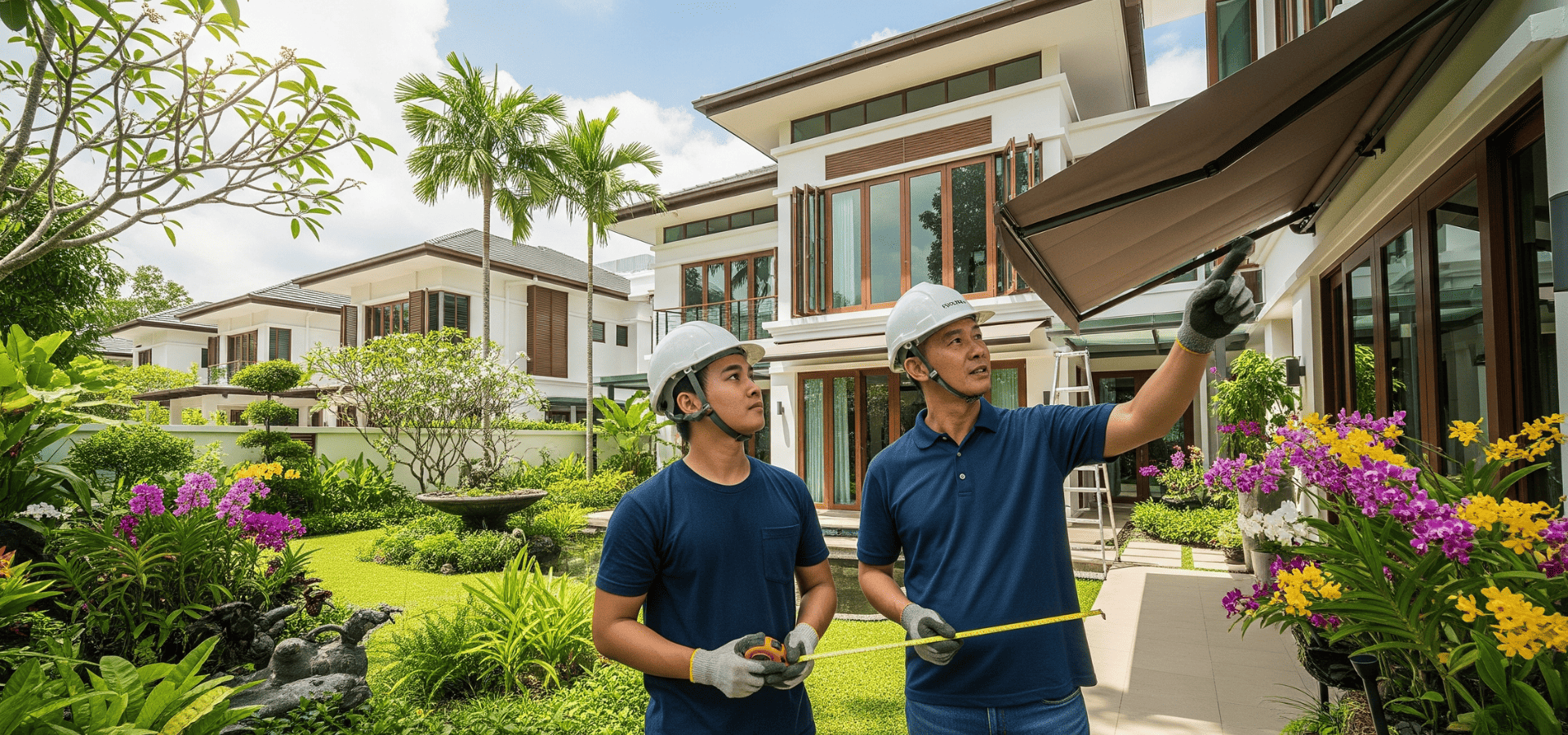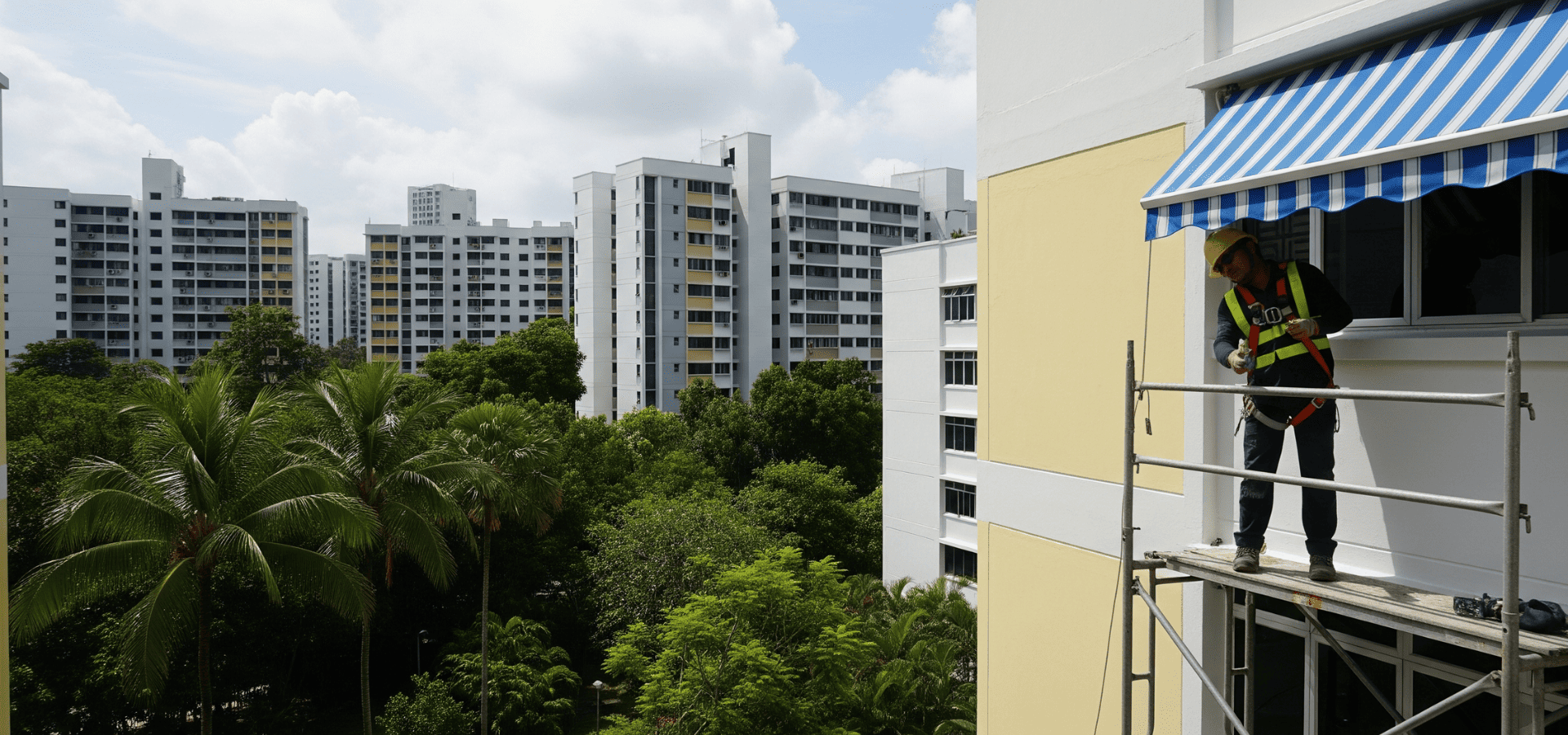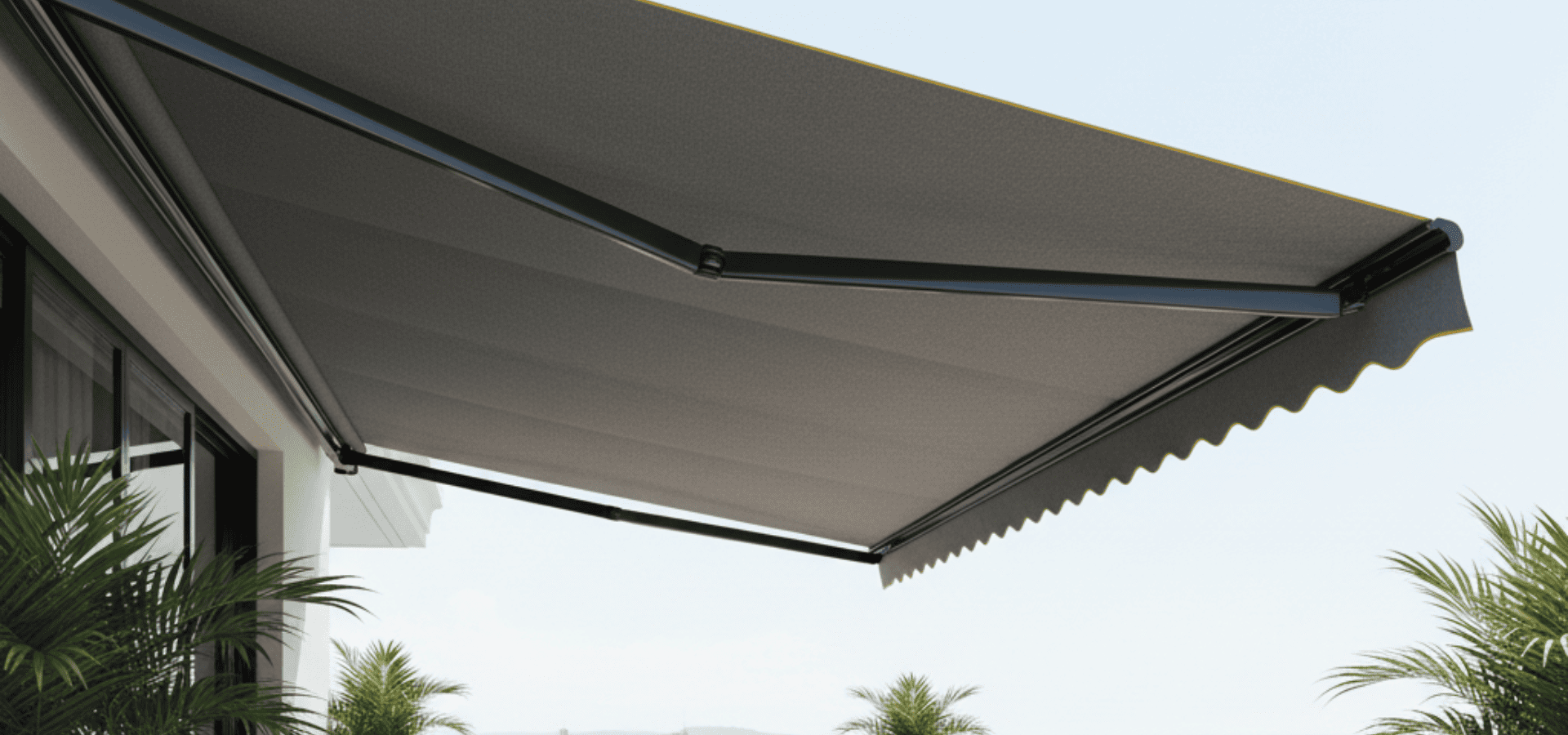Training And Certification For Awning Installers In Singapore
Awning installation may seem simple at first glance, and some homeowners even DIY the installation, but there's actually a lot going on, which is why proper training and certifications are so important.
To the untrained eye, all the installer is doing is attaching the brackets and then securing the awning to the brackets.
But consider that to attach the brackets, the installer needs to assess the wall type, calculate whether it can bear the weight of the awning, choose the right fastener, and of course, ensure that everything is secured properly.
The awning also needs to comply with
Singapore’s awning regulations, or you could end up being fined for improper installation, or even be ordered to remove the awning.
It’s also worth noting that most home insurance policies won’t cover awning damage if the awning was installed by an unlicensed contractor. This means that if your awning falls and hurts someone, or causes any other parts of your home to collapse, you won’t have any kind of coverage whatsoever.
So whether you’re a homeowner wanting to make sure you’re hiring someone legit, or you’re looking to get into the awning industry, here are the various awning installation trainings and certifications you need to know about.
Awning-Specific Training And Certifications
There isn’t actually a single nationwide standardised awning installation training programme that all awning installers need to go through.
Instead, a good awning contractor typically picks up his or her skills through one or more of the following channels.
1. Apprenticeships

The most common path that awning contractors take to get to where they are and become a proper, skilled awning installer, is simply to become the apprentice of another experienced awning contractor.
This is partly because there just isn’t any other clear path for them to take, like a government-recognised training programme, but also because learning directly from another person who’s walked the path pretty much guarantees that you’ll learn everything you need to know.
They’ll get hands-on experience, and having the more experienced awning contractor correcting their mistakes along the way helps them fast-track the learning process and perfect their skills.
This path is also popular because it means that after they’ve completed the apprenticeship and have attained the necessary skills, they’ll immediately be able to start working under the same company, and they won’t have to worry about not being able to find a job as an awning installer.
Ultimately, remember that hands-on experience will always beat theory. Someone who’s been installing awnings for multiple years will do a far better job than someone who’s gone through a mere training course.
While it would be ideal to complement actual experience with formal training courses (which we’ll get to in just a second), remember that training courses will always fall second to practical experience. The years of experience that a contractor has count for far more than whatever training programmes he or she has gone through.
That’s not to say training courses don’t matter though, especially when it comes to more niche awning types.
While there’s no general awning installation training course on the market, various awning companies, especially for higher-end systems, offer their own training programmes to ensure awning installers know how to handle their systems.
Here are the other awning installation training programmes out there.
2. Factory-Trained Installers
Factory training is termed as such because the contractor or installer is getting the training directly from the source.
This is usually either the factory or the brand’s specialised training team.
There's no point in hosting trainings if it's just regular awnings, because the contractor would already know how to install them, so factory trainings are usually only hosted by manufacturers of higher-end awning systems.
Some common examples include motorised retractable systems, premium German retractable awning systems, and custom European-designed pergolas (not technically awnings, but still often offered by awning contractors).
These high-end systems are more complicated and require installers to follow very specific installation procedures. That's why these factory training programmes are necessary to guarantee that the product functions and performs well.
In fact, they're so essential that local awning installation companies will send their staff overseas to attend the training workshop, or the manufacturer’s trainers will fly in to Singapore just to conduct the training.
During these trainings, local contractors will be taught the ins and outs of the awning system, how to assemble the frame, how to wire the motor, how to programme the controls, and so on.
Only after a contractor has gone through the training and passed the necessary tests will he or she be certified as an “Authorised Installer” or “factory-trained” installer for that product line.
So when you see “factory-trained” or “Authorised Installer” on an awning company’s brochure, now you know what it means.
Even if a contractor is skilled enough or has enough experience to figure out the system without needing training, it's still crucial that they go through the training. They may not need the training, but without it, they won't be recognised as a certified installer. And if the installation is carried out by a non-certified installer, there's a good chance that the manufacturer will seem the warranty invalid.
If you’re getting a higher-end system installed, especially branded ones, always check with the contractor whether a certified installer is needed to carry out the installation.
Now, it goes without saying that unscrupulous contractors may either lie that it’s not needed, or lie and say that they’re certified when they’re actually not, so always ask to see their proof of course completion.
3. Supplier/Vendor Workshops
In some cases, even for non-premium awnings, manufacturers may offer trainings and workshops.
Even though the average awning contractor shouldn’t have much difficulty installing common awnings, brands may still offer workshops just to ensure that there’s zero question of the installer not knowing how to install it right.
The reason for this is that if the awning fails due to poor installation, unless it’s obvious to the homeowner that the installation was poorly done, they may end up blaming the supplier.
That’s why certain suppliers still host their own workshops to make sure their product is represented well.
In addition, many vendors regularly introduce new materials, whether that’s a new UV-resistant fabric or stronger polycarbonate sheets.
These materials may have different expansion rates, weight tolerances, or fastening requirements, so when there are important updates, vendors may also hold workshops to keep contractors current on product installation best practices.
These aren’t usually advertised by awning companies publicly though, because the ability to install standard awnings is already expected of any awning contractor.
Non-Awning-Specific Training And Certifications
As we explained earlier, awning-specific trainings and certifications aren’t very common, but it’s not a big deal, because when it comes to awning installation, hands-on experience is king.
Having said that, becoming an awning installer isn’t just about knowing how to install an awning. The same goes for the various other home improvement trades.
In Singapore, there are a few trainings and certifications that all home improvement contractors should go through and attain for the sake of safety.
Here are the three main must-have certifications for all home improvement contractors in Singapore.
1. Construction Safety Orientation Course (CSOC)

There’s no question that Singapore is a strictly regulated nation, and one of the ways in which the government enhances workplace safety is with Workplace Safety & Health (WSH) training programmes.
For construction and renovations, under which awning installation falls, the WSH training programme that workers need to attend is the Construction Safety Orientation Course (CSOC).
The CSOC trains workers on general safety practices, like wearing harnesses, using equipment properly, and risk and hazard awareness.
At the end of the day, even a poorly installed awning is better than somebody getting hurt, so the CSOC certification is an absolute must-have to ensure your awning contractor carries out his or her work safely.
2. bizSAFE Certification
bizSAFE is a step up from CSOC. bizSAFE certification is basically a more intensive safety programme that’s organised by the Workplace Safety and Health Council (WSHC).
There are stages to bizSAFE certification, with Level 1 being the lowest level and Level 5 being the highest. The higher the level, the more robust a company’s safety management systems are.
Here’s a quick breakdown of the levels:
- Level 1: The company’s top management has attended a half-day bizSAFE workshop conducted by WSHC-approved trainers. This course dives into the basics of safety and risk management.
- Level 2: The company has appointed a Risk Management (RM) champion, who will have undergone the bizSAFE Level 2 course. This means that a company has a designated individual who can implement risk assessments and safe work procedures.
- Level 3: The company has actually implemented a risk management plan that complies with WSHC regulations. This will be verified by a third-party auditor or MOM-approved WSH auditor. Level 3 opens up many more opportunities than levels 1 and 2, so many contractors will be at least Level 3 bizSAFE certified.
- Level 4: Level 4 takes Level 3 one step further by implementing a more robust and comprehensive Workplace Safety and Health Management System (WSHMS). Level 4 goes beyond just safety during jobs, but also throughout the company, at all levels. The standards are also stricter, such as the OHSAS 18001 or ISO 45001.
- Level 5: This is the highest level of workplace safety commitment that any company can have. This just means that the company’s Level 4 efforts have been audited by MOM-approved auditors to international standards, like the ISO 45001 or OHSAS 18001.
A good rule of thumb is to have at least bizSAFE Level 3 certification, as that certifies that a company has not only gone through bizSAFE courses, but actually implemented them functionally.
3. Work-At-Height Certification

Awnings are usually installed at height (above windows, second-floor balconies, etc), which can obviously be quite dangerous if proper procedures aren’t followed.
That’s why the Ministry of Manpower (MOM) mandates that workers who work at heights need to attend a specialised Work-at-Height course.
The course will teach installers how to use safety equipment like safety harnesses, set up ladders and scaffolding, and how to secure themselves to prevent falls.
If your awning is being installed at height, make sure that your contractor has this certification.
Conclusion
Whether you’re a budding awning contractor or a homeowner looking out for your home, these are the main training and certifications to look out for when it comes to awning installation.
If you’re a homeowner, don’t hesitate to verify those credentials with your contractor. It’s the only way to ensure you’re hiring someone legit and safeguard your home’s interests, and if he or she has the credentials, there should be no problem with showing them to you.
Just be reasonable when asking to see them, and don’t demand them rudely. Nobody likes to feel challenged or have their credibility questioned, but a good contractor will understand and oblige, as long as you’re asking courteously.


